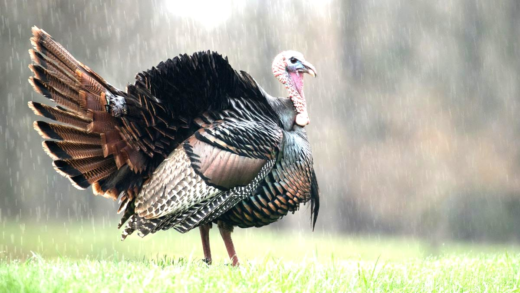Langurs are crucial for ecosystem health, aiding in seed dispersal and vegetation management. Many species face endangerment due to habitat loss and poaching. Their unique social structures and behaviors set them apart from other primates, while complex communication methods enhance social bonds.
What Are Langurs?
Langurs are fascinating primates belonging to the family Cercopithecidae, known for their unique characteristics and behaviors. They are primarily found in Asia, particularly in regions like India, Nepal, and Southeast Asia. Langurs are medium to large-sized monkeys with long limbs and tails, which aid them in their arboreal lifestyle. Their fur can vary from gray to black, and they often have distinctive facial markings.
One of the most notable traits of langurs is their social structure. These primates live in groups, known as troops, which can consist of several individuals, usually led by a dominant male. This socialization is vital for their survival, as it helps protect them from predators and fosters cooperation in foraging for food. Langurs are also known for their expressive faces and vocalizations, which play a crucial role in their communication.
Species of Langurs
There are numerous species of langurs, each with distinct features and habitats. Some of the most recognized species include:
- Hanuman Langur (Semnopithecus entellus): Found in northern India, this species is known for its grayish fur and white face.
- Black-faced Langur (Semnopithecus schistaceus): This species, native to the Himalayan foothills, has a striking black face and long limbs.
- Assamese Langur (Trachypithecus assamensis): Found in Assam and surrounding areas, it features a golden-brown coat and long tail.
- Phayre’s Leaf Monkey (Trachypithecus phayrei): This species is notable for its unique leaf-eating diet and can be found in Myanmar and Thailand.
Each species of langur exhibits unique adaptations to their environment, making them an integral part of the ecosystems they inhabit.
Langurs’ Diet
Langurs primarily have a herbivorous diet, which consists mainly of leaves, fruits, flowers, and seeds. They are particularly fond of tender leaves, making them essential for maintaining healthy forest ecosystems by aiding in plant growth through their foraging habits. Here’s a closer look at their dietary preferences:
- Leaves: Langurs consume a variety of leaves from different tree species, which provide essential nutrients.
- Fruits: They enjoy seasonal fruits, which offer energy and hydration.
- Flowers: During flowering seasons, langurs can be seen feasting on blossoms.
- Seeds: Some species also include seeds in their diet, especially when other food sources are scarce.
This diverse diet not only sustains langurs but also plays a critical role in seed dispersal, contributing to the health and regeneration of their habitats.
The Unique Burping Behavior of Langurs
Langurs are known for their quirky behaviors, one of which is their frequent burping. This unique behavior often raises eyebrows, but there’s a practical reason behind it. Langurs are primarily herbivorous, consuming large amounts of fibrous plant material. This diet leads to gas buildup in their digestive systems. When langurs burp, they release this gas, making them feel more comfortable. Interestingly, burping can also serve a social purpose, as it can signal to other langurs about the quality of food consumed. So, while it may seem amusing, it’s a vital part of their digestive and social interactions.
Fascinating Behaviors of Langurs
Langurs exhibit a range of interesting behaviors that highlight their intelligence and adaptability. Here are some captivating examples:
- Cooperative Foraging: Langurs often work together to find food, which enhances their chances of spotting predators.
- Playful Interactions: Young langurs engage in playful antics, swinging from branches and chasing each other, which is crucial for developing social skills.
- Grooming Rituals: Grooming is a common activity among langurs, helping to strengthen social bonds within troops.
- Vocal Communication: Langurs use a variety of vocalizations to communicate, including alarm calls to warn others of danger.
These behaviors not only showcase their social structure but also their ability to adapt to their environment, making them a vital part of the ecosystems they inhabit.
Social Structures of Langurs
Langurs have complex social structures that play a significant role in their survival. Typically, langurs live in groups known as troops, which can range from a few individuals to over 30. These troops are usually led by a dominant male, who mates with the females in the group. The social hierarchy is quite pronounced, with each member having a specific role. Here’s how langurs socialize:
- Hierarchy: The dominant male often displays aggressive behaviors to maintain his status, while younger males may leave the troop to find their own.
- Maternal Care: Female langurs are known for their strong maternal instincts, often forming close bonds with their offspring.
- Group Defense: Troops work together to defend against predators, showcasing their cooperative nature.
This socialization is crucial for their survival, as it fosters cooperation and communication, allowing langurs to thrive in their natural habitats.
Ecological Significance of Langurs
Langurs play a vital role in their ecosystems. As primarily herbivorous animals, they help maintain forest health through their feeding habits. By consuming large amounts of leaves, fruits, and flowers, langurs contribute to plant growth and seed dispersal. Here are a few key points about their ecological importance:
- Seed Dispersal: Langurs consume fruits and seeds, and their digestive system helps in dispersing seeds across various locations, promoting forest regeneration.
- Vegetation Management: Their selective feeding on leaves influences which plants thrive in their habitats, thus shaping the vegetation structure.
- Habitat for Other Species: By foraging in trees, langurs create openings and pathways that benefit other wildlife, enhancing biodiversity.
Overall, langurs are integral to the balance of their ecosystems, ensuring that their habitats remain healthy and diverse.
Are Langurs Endangered?
Many species of langurs face significant threats and are considered endangered. Habitat destruction due to deforestation, agricultural expansion, and urban development poses a critical risk to their populations. Additionally, poaching and illegal wildlife trade further exacerbate their endangered status. Here’s a closer look at their conservation status:
- Habitat Loss: Urbanization and agricultural activities have led to the degradation of their natural habitats, forcing langurs into smaller, isolated areas.
- Conservation Efforts: Various organizations are working to protect langur habitats and raise awareness about their plight. Protected areas and wildlife sanctuaries have been established in some regions.
- Legal Protections: Many langur species are protected under national and international laws, which aim to prevent poaching and conserve their populations.
Despite these efforts, ongoing challenges threaten the survival of langurs, making conservation action essential.
Langurs Compared to Other Primates
Langurs are unique among primates, distinguished by their adaptations and behaviors. Compared to other primate species, they exhibit several notable traits:
- Social Structures: While many primates live in groups, langurs have particularly complex social hierarchies, often led by a dominant male.
- Dietary Habits: Unlike many other primates that have varied diets, langurs primarily focus on leaves, which affects their foraging behavior and social interactions.
- Burping Behavior: Their frequent burping, a result of their fibrous diet, is less common among other primates, showcasing their unique adaptations.
These distinctions highlight the special role langurs play in the primate family and their ecological niches.
Communication Methods of Langurs
Langurs have developed sophisticated communication methods that are vital for their social interactions. They utilize a combination of vocalizations, body language, and facial expressions to convey messages. Here are some ways langurs communicate:
- Vocalizations: Langurs produce various calls, including alarm calls to warn of predators, which can vary in intensity based on the threat level.
- Body Language: Postures and movements play a crucial role in their interactions, signaling everything from aggression to submission.
- Facial Expressions: Their expressive faces can communicate emotions and intentions, aiding in social bonding and group cohesion.
This multifaceted communication system is essential for maintaining social structures and enhancing cooperation among troop members.





Comments are closed.